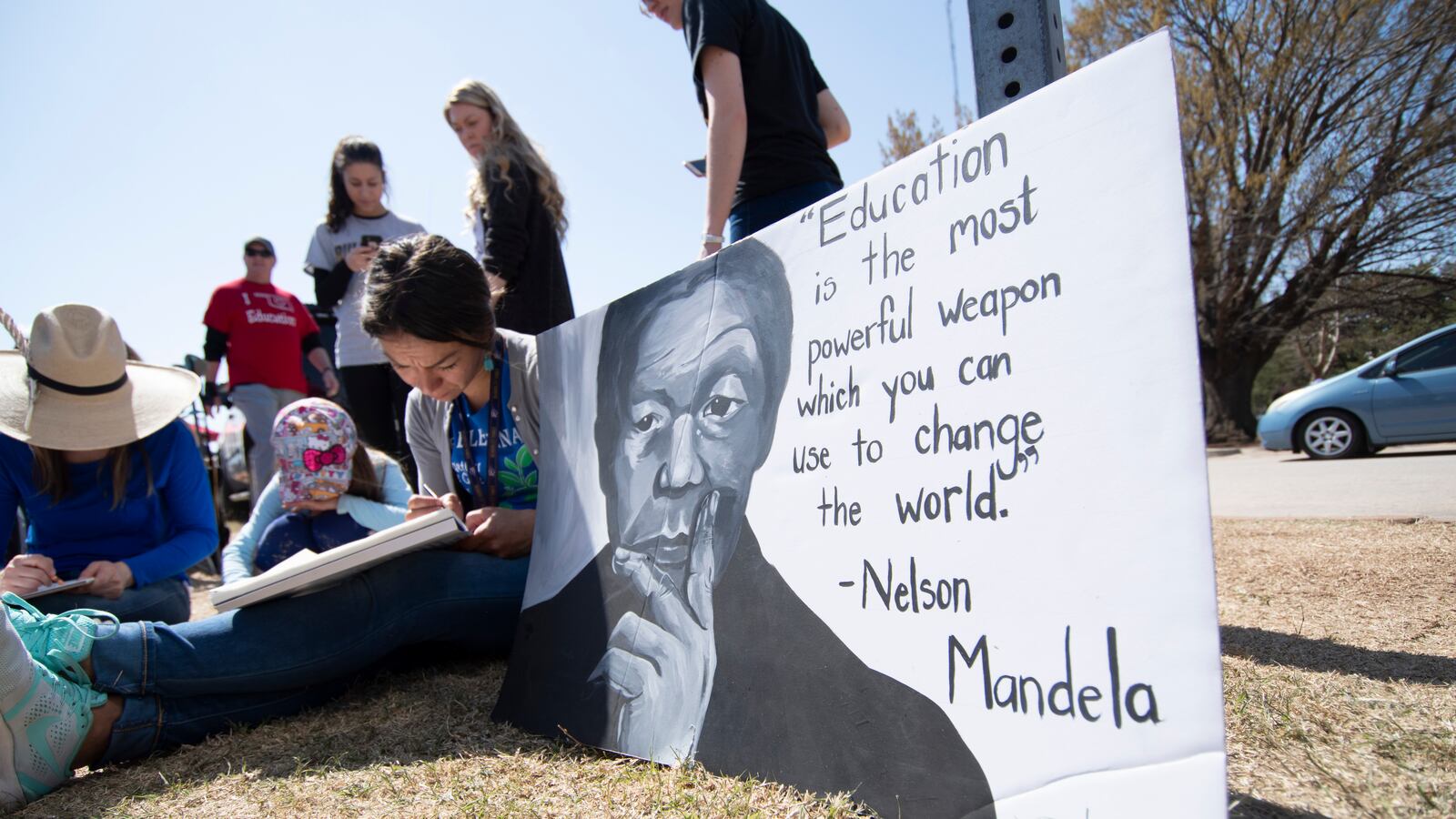I’ve spent the last 40 years watching the state I love divest in its future. The cuts to education budgets just kept coming. Oklahoma City Public Schools, where I spent the last 10 years working with teachers, had to cut over $30 million in the 2016-17 academic year alone.

Over time, students, teachers, and parents, at times including myself, became complacent. We all did what we could. For me, that meant working with the students and teachers in the most disenfranchised areas of my city.
In the past 18 months, that has also meant working at Generation Citizen, a nonprofit promoting civics education across Oklahoma. We help students deploy “action civics.” Over the course of a semester, students debate what they would change if they were in charge of their school, city, or state, and select one issue to address as a class, which may involve lobbying elected officials or building a coalition.
Their progress has been incredible. But when teachers across the state decided to walk out of their schools and head to the State Capitol to demand additional funding for education, action civics came to life in a huge way. And in addition to galvanizing our teachers, I watched this moment in Oklahoma transform young people.
My takeaway? Over the long term, this walkout will hopefully lead to more funding for our schools. But it will definitely lead to a more engaged youth population in Oklahoma.
These past two weeks have sparked a fire that will not let up anytime soon. With actual schools closed, the Oklahoma State Capitol became a laboratory rich with civic experimentation. Students from Edmond Memorial High School wanted elected officials to personally witness what students and teachers continue to accomplish, and when the walkout started, the students started a “Classroom at the Capitol.” Over 40 students held AP English Literature on the Capitol lawn. Their message: the state might not invest in their classrooms, but classes would go on.
In the first few days of the walkout, the legislature refused to take action. Many wondered if their voices were being heard. That’s when Gabrielle Davis, a senior at Edmond Memorial, worked to rally students to the Capitol for a massive demonstration.
“I want the legislators to put faces to the decisions they’re making,” Gabrielle said.
By Wednesday, the “Classroom at the Capitol” had grown to over 2,000 students. The students were taking effective action: speaking knowledgeably on the funding crisis, with a passion and idealism that only young people can possess.
As students’ numbers grew, so did their confidence. By Wednesday afternoon, I watched as the state Capitol buzzed with students not only protesting, but getting into the nitty-gritty of political change by learning the names and faces of their elected officials.
By Thursday and Friday, students and teachers were no longer operating independently. The collaboration which makes classroom learning most effective was happening in the halls of the Capitol. When students identified the representative holding up a revenue bill, they walked through the line to find students from his home district to lead the charge.
Last Monday, with the walkout still ongoing, the students I saw were armed with talking points and legislative office numbers. After another student rally, they ran off to the offices of their elected officials.
Two students, Bella and Sophie, accompanied by Bella’s mom, made their way to the fourth floor. The girls stood outside the door, took a deep breath, and knocked. State Senator Stephanie Bice was in a meeting. They stepped out to decide their next move and decided to write personal notes to their state senators. With letters written, edited, and delivered, Bella and Sophie were beaming.
“That feels so good,” Sophie said.
A week of direct civic action had turned protesters into savvy advocates.
Until this walkout, most of the participating students had never met their elected officials. But that’s quickly changing. Students have worked collaboratively to demystify the legislative process, understand the policy goals articulated by organizing groups, and advocate for revenue measures that would support a more equitable education system.
Jayke, a student from Choctaw, reflected on this reality. “These last few days at the Capitol I have learned more about life and how to stand up for what I believe.”
That’s no small thing. Over those 14 days, I listened to students use their voices to express their experiences. Many also spoke on behalf of students who were not there. They spoke for the 60 percent of Oklahoma public school students who qualify for free or reduced-price lunch. They rallied for the students at each of their schools who do not have enough food to eat.
Through this conflict, our students are learning the importance, and the mechanics, of political participation. Our young people are becoming powerful in a way that will outlast this funding crisis. It’s everything a civics educator could hope for.
Amy Curran is the Oklahoma site director for Generation Citizen, an education nonprofit.
About our First Person series:
First Person is where Chalkbeat features personal essays by educators, students, parents, and others trying to improve public education. Read our submission guidelines here.


